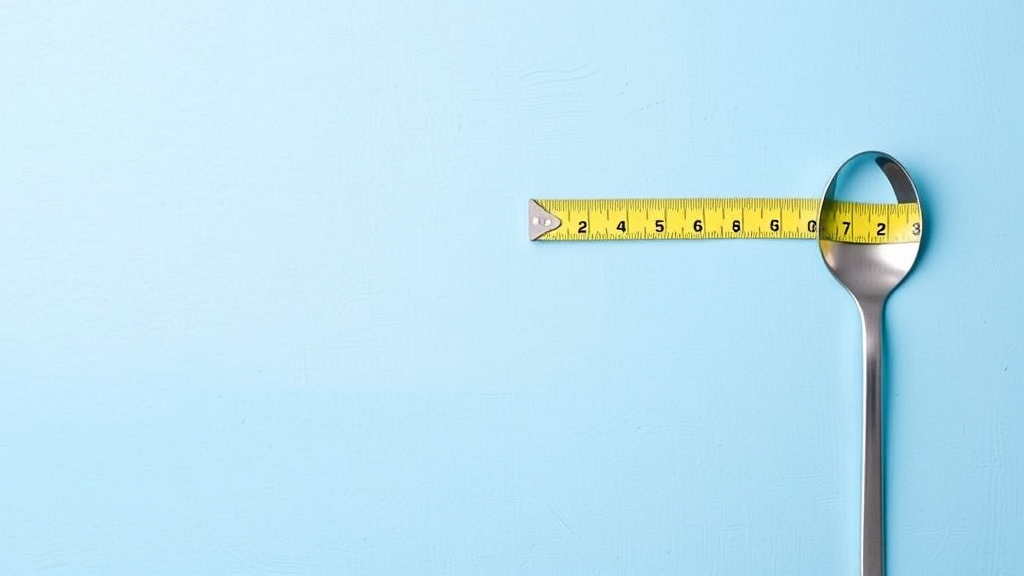What’s a realistic weekly weight loss goal?
When considering weight loss, setting realistic goals is essential. Many people embark on a weight loss journey with motivation and excitement. However, without a clear understanding of what is achievable, you may feel discouraged quickly. The good news is that a sensible weekly weight loss goal can keep you on track and make your journey enjoyable.
For most individuals, aiming for a weight loss of 1 to 2 pounds per week is realistic and healthy. This target is recommended by health organizations like the Centers for Disease Control and Prevention (CDC) and the National Heart, Lung, and Blood Institute. Losing weight at this pace allows your body to adjust, reduces the risk of muscle loss, and helps establish long-term habits.
Here’s a breakdown of why this weight loss goal is effective and beneficial:
- Physical Health: Losing weight too fast can lead to health complications. Gradual weight loss minimizes the risk of gallstones and nutritional deficiencies.
- Emotional Well-being: Achieving smaller, sustainable goals can boost your confidence. Success encourages you to stick with your program.
- Behavior Changes: A slower approach gives you time to develop healthy habits. Changing your lifestyle in the long run helps maintain the weight you’ve lost.
To achieve this weekly weight loss goal, focus on a combination of dietary changes and physical activity. Here are some effective strategies:
| Strategy | Description |
|---|---|
| Balanced Diet | Incorporate fruits, vegetables, lean proteins, and whole grains into your meals. |
| Portion Control | Be mindful of serving sizes to avoid overeating. |
| Hydration | Drink plenty of water. Sometimes, thirst is mistaken for hunger. |
| Regular Exercise | Engage in at least 150 minutes of moderate aerobic activity per week. |
| Track Your Progress | Keep a food and exercise journal to monitor your habits. |
In addition to food and exercise, consider the psychological aspect of weight loss. Motivation can dip over time, so having a support system is beneficial. Join weight loss groups, enlist a friend, or even consult a professional trainer or dietitian. Having someone to share your journey with can keep you accountable and positive.
Another thing to remember is that individual results will vary. Factors such as age, gender, and metabolic rate significantly impact how quickly you can lose weight. Additionally, people with more body fat may lose weight faster initially compared to those who are closer to their target weight. It’s crucial to listen to your body and adjust your goals accordingly; it’s not just about the number on the scale but how you feel.
Enhancing your knowledge about nutrition and fitness can further guide your weight loss efforts. Websites like ChooseMyPlate.gov offer resources for meal planning and portion size guidance that are incredibly helpful in creating a balanced diet.
It’s also advisable to be realistic about plateaus. You may sometimes feel stuck despite your hard work. Understand that weight loss can fluctuate and that it’s perfectly normal. The key is to stay consistent with your healthy habits, as ongoing effort will lead to sustainable changes over time.
Setting a realistic weekly weight loss goal of 1 to 2 pounds can significantly enhance your chances of success. Coupled with the right strategies, support systems, and a focus on long-term habits, you can enjoy a healthier lifestyle and reach your goals effectively. Stay positive, keep informed, and look forward to the journey ahead!
Factors Influencing Individual Weight Loss Rates
Weight loss is a journey that varies greatly between individuals. While some may shed pounds quickly, others find it a slow and challenging process. Understanding the factors that influence individual weight loss rates can greatly enhance your approach to achieving a healthier lifestyle.
Metabolism
Your metabolism plays a significant role in how quickly you lose weight. It refers to the body’s process of converting food into energy. A faster metabolism means you burn more calories, while a slower one can lead to weight loss plateauing over time. Factors that affect metabolism include:
- Age: Metabolism typically slows down with age.
- Gender: Men usually have a higher metabolic rate than women due to their greater muscle mass.
- Genetics: Some people are naturally predisposed to a faster metabolism.
Diet Composition
The types of food you consume significantly impact your weight loss. A balanced diet rich in whole foods can facilitate fat loss and promote muscle gain. Consider the following elements:
- Macronutrients: Ensure a good balance of proteins, fats, and carbohydrates.
- Caloric Intake: Track your calorie consumption to avoid overeating.
- Quality of Food: Opt for nutrient-dense foods over processed options.
Exercise Habits
Exercise is essential for effective weight loss. Regular physical activity accelerates calorie burning and helps build muscle, which further boosts metabolism. Key factors to consider include:
- Type of Exercise: A mix of cardio and strength training can optimize fat loss.
- Frequency: Aim for at least 150 minutes of moderate activity each week.
- Intensity: Higher intensity workouts can lead to more significant weight loss.
Emotional and Psychological Factors
Your mental state can significantly affect your weight loss journey. Emotional eating, stress, and motivation levels can impact your ability to stick to a diet or exercise routine. Here are some psychological aspects to keep in mind:
- Stress Levels: High stress can lead to overeating and weight gain.
- Support Systems: Having friends or family to support you can boost motivation.
- Mindset: A positive attitude toward your goals is crucial for staying on track.
Sleep Quality
Quality sleep is often overlooked but is vital for weight loss. Poor sleep can disrupt hormones that regulate appetite and metabolism. Consider these factors for better sleep:
- Duration: Aim for 7-9 hours of quality sleep each night.
- Sleep Environment: Make your bedroom conducive to sleep by minimizing noise and light.
- Bedtime Routine: Establish a calming pre-sleep routine to promote relaxation.
Medical Conditions
Various medical conditions can affect your weight loss efforts. Hormonal imbalances, for instance, can make it difficult to lose weight. Here are some conditions to be aware of:
- Hypothyroidism: Can slow down metabolism.
- Cushing’s Syndrome: Associated with weight gain and difficulty losing weight.
- PCOS: Can affect hormonal balance and appetite regulation.
Hydration
Stay hydrated! Water plays a crucial role in weight loss. Drinking enough water can help you feel full, making it less likely that you’ll overeat. Additionally, water aids in metabolism. Tips for staying hydrated:
- Have a water bottle: Keep a bottle handy to remind you to drink.
- Set Goals: Aim for at least 8 cups daily.
- Incorporate Water-Rich Foods: Foods like cucumbers and watermelon add to your hydration.
Weight loss is a complex process influenced by many factors unique to each person. By understanding these variables, you can tailor your approach for more sustainable results. For further guidance, consider resources like CDC Healthy Weight or NHLBI – Losing Weight.
The Importance of Setting Sustainable Health Goals
When embarking on a journey toward better health, one of the key components of success is the establishment of sustainable health goals. Setting these goals not only guides you on your path but also significantly increases your chances of maintaining long-term health improvements. Below, we explore why creating manageable and realistic health goals is essential for your overall well-being.
One of the primary reasons for setting sustainable health goals is to avoid overwhelming yourself. When you aim too high too quickly, it can lead to frustration and burnout. By focusing on smaller, achievable goals, you can build confidence as you reach each milestone. This gradual approach fosters a sense of accomplishment that motivates you to keep moving forward.
Moreover, sustainable goals take into account your lifestyle and unique circumstances. What works for one person may not work for another. By creating personalized goals that fit your daily habits, preferences, and challenges, you’re more likely to stick with them. Here’s how to ensure your health goals are realistic and sustainable:
- Assess Your Current Situation: Take stock of your current health and fitness level. Are you active, or do you need to start from scratch? Understanding where you are now will help you set realistic goals.
- Set SMART Goals: Ensure your goals are Specific, Measurable, Achievable, Relevant, and Time-bound. For example, instead of aiming to “lose weight,” aim to “lose 1-2 pounds a week for the next month.”
- Break It Down: Large goals can feel daunting. Break them down into smaller, manageable tasks. If you aim to exercise more, start by committing to 10 minutes of physical activity a day, then gradually increase.
Sustainability is also about making changes that you can maintain long-term. Drastic diets or intense workout regimes might yield quick results, but they are often not maintainable. Instead, focus on incorporating healthy habits into your daily life. Small changes can lead to significant transformations over time. Consider the following:
- Balanced Nutrition: Instead of restricting certain foods, consider adding more fruits, vegetables, and whole grains to your meals. Aim for variety, as this makes healthy eating more enjoyable.
- Consistency Over Intensity: Regular, moderate exercise can be more beneficial than sporadic, intense workouts. Aim for activities you enjoy, which makes it easier to stay consistent.
- Self-Compassion: Understand that setbacks are part of any journey. Allow yourself grace when things don’t go as planned. Reflect, learn, and return to your goals with renewed focus.
Another critical aspect to consider is keeping track of your progress. Monitoring your advances helps you stay motivated and allows you to make adjustments as needed. Using a journal or an app can help visualize how far you’ve come, reinforcing your commitment to your health goals.
Accountability also plays a significant role in achieving your goals. Whether it’s a friend, family member, or a community group, having someone to share your journey with can greatly increase your success rate. Join an exercise class, share meal plans with a friend, or even participate in online forums focused on wellness. This support can provide invaluable motivation and encouragement.
As you establish your sustainable health goals, remember that they should be flexible. Life can be unpredictable, and it’s essential to adapt when necessary. If you have a challenging week or experience an injury, reassess and adjust your goals accordingly rather than abandoning them altogether.
The ultimate aim of setting sustainable health goals is to enhance your quality of life. By making small, lasting changes, you cultivate a healthier lifestyle that you can enjoy now and in the future. For additional support and resources, visit [American Heart Association](https://www.heart.org) or [Mayo Clinic](https://www.mayoclinic.org). Both sites offer excellent resources to help you on your path to improved health.
By being mindful of the importance of setting realistic and sustainable health goals, you lay a solid foundation for a healthier future. This approach not only supports physical health but nurtures mental and emotional well-being too.
Understanding Caloric Deficit and Its Role in Weight Loss
When trying to lose weight, understanding caloric deficit is fundamental. A caloric deficit occurs when you consume fewer calories than your body requires to maintain its current weight. This deficit forces the body to use stored energy, which can lead to weight loss over time.
Your maintenance calories can vary based on many factors, such as age, gender, weight, height, and activity level. To achieve a caloric deficit, it’s essential to determine your Total Daily Energy Expenditure (TDEE). Many online calculators can help you find this number, guiding you on how many calories you should consume to lose weight.
Here are some key factors that impact your caloric needs:
- Age: Metabolism generally slows down as you age, affecting how many calories you may need.
- Gender: Generally, men have a higher basal metabolic rate than women, resulting in different caloric needs.
- Weight: Heavier individuals typically require more calories than lighter individuals.
- Height: Taller people often burn more calories at rest.
- Activity Level: Your daily activity, including exercise, can greatly influence your overall caloric requirement.
Once you’ve calculated your TDEE, setting a caloric deficit ensures you are on the right path to losing weight. A common approach is to create a deficit of 500 to 1000 calories daily, which can lead to approximately 1 to 2 pounds of weight loss per week. However, it’s critical to ensure that you do not drop below 1200 calories for women and 1500 calories for men unless supervised by a healthcare provider.
Adopting a balanced diet is essential for maintaining a caloric deficit while still getting the necessary nutrients. Focus on whole foods, such as:
- Fruits and vegetables
- Lean proteins
- Whole grains
- Healthy fats
By making smart choices, you can enjoy your meals and continue losing weight. It’s also vital to stay hydrated, as drinking enough water can help control hunger and improve metabolism.
Physical activity can enhance your weight loss journey significantly. both strength training and cardio can help you burn more calories and preserve muscle mass while losing weight. Here’s how different types of exercise contribute:
| Type of Exercise | Caloric Burn (approx. per hour) |
|---|---|
| Running | 600-1000 |
| Cycling | 400-800 |
| Weight Lifting | 300-500 |
| Walking | 200-400 |
Consistency is crucial when maintaining a caloric deficit. Small lifestyle changes can make a significant impact over time. Consider keeping a food journal to monitor your calorie intake and make adjustments when necessary. This practice can help you stay accountable and recognize patterns that may impact your weight loss goals.
Additionally, be cautious of drastic diets or extreme caloric restriction. While they may present quick results, sustainability is vital for long-term success. Remember to focus on progress, not perfection. If you find yourself plateaus, consider re-evaluating your caloric intake or adjusting your exercise routine.
There are many resources to aid you in your weight loss journey. Websites such as MyFitnessPal provide tools for tracking calories, while ChooseMyPlate.gov offers guidance on healthy eating. Seek support from online forums or local weight loss groups to stay motivated and exchange tips with others on the same journey.
Understanding caloric deficit and its role in weight loss is vital for effective, healthy weight management. By knowing how to balance your calorie intake and expenditure, you can achieve your weight loss goals sustainably. Remember, it’s not just about the numbers; it’s about adopting a healthy lifestyle that promotes wellness for years to come.
The Role of Diet vs. Exercise in Effective Weight Loss
When it comes to shedding those extra pounds, many people often wonder about the right balance between diet and exercise. Both elements play crucial roles in effective weight loss, but the emphasis can shift based on individual circumstances, preferences, and goals.
Dietary changes and exercise regimes are the two foundational pillars of successful weight loss. But how do they interact with one another? Often, the relationship is not as straightforward as one might think.
The Influence of Diet on Weight Loss
Your diet accounts for a significant part of your day-to-day calorie intake. To lose weight, you need to burn more calories than you consume, commonly referred to as a caloric deficit. Here are some key aspects to consider:
- Caloric Deficit: The fundamental principle of weight loss is consuming fewer calories than your body uses. You can achieve a caloric deficit by either reducing intake or increasing physical activity.
- Quality of Food: Not all calories are created equal. Foods high in fiber, protein, and healthy fats tend to be more filling and nutritious, supporting steady weight loss.
- Portion Control: Keeping an eye on serving sizes can help you maintain your caloric goals without compromising satisfaction.
- Hydration: Drinking water can help curb hunger and reduce overeating. Staying hydrated is vital for optimal bodily functions, including metabolism.
Exercise: The Other Half of the Equation
While diet plays a crucial role, physical activity cannot be dismissed either. Exercise contributes not only to burning calories but also to building muscle. Here’s why exercise is essential:
- Increased Calorie Burn: Exercise allows you to burn more calories during and after your workout. This is especially true for resistance training, which helps in muscle development.
- Improved Metabolic Rate: Regular exercise can elevate your resting metabolic rate, helping you burn more calories even when at rest.
- Enhancing Mental Well-Being: Exercise releases endorphins, which can alleviate stress, anxiety, and depressive symptoms that often accompany weight loss journeys.
- Lasting Habit Formation: regular physical activity fosters healthier, more active lifestyles beyond just weight loss
Finding a Balance
Finding the right balance between diet and exercise can significantly influence your weight loss success. It’s essential to tailor both aspects to suit your preferences and lifestyle. Here are a few tips:
- Start Small: If you’re new to exercise, begin with short sessions and gradually increase the duration and intensity.
- Choose Enjoyable Activities: Engaging in physical activities you love will make it easier to stay active. Whether it’s dancing, hiking, or swimming, find what makes you happy.
- Meal Prep: Plan your meals around nutritious ingredients. This can help reduce impulsive eating and keep your diet on track.
Realistic Expectations
Understanding the realistic expectations of weight loss is crucial. Aim for a steady and sustainable weight loss of 1-2 pounds per week. This pace is considered safe and is more likely to yield lasting results. Here’s a breakdown of how diet and exercise might contribute:
| Factor | Contributions to Weight Loss |
|---|---|
| Diet | 75-80% |
| Exercise | 20-25% |
This indicates that while exercise is vital for overall health and fitness, dietary changes tend to play a more significant role in weight loss. However, your situation may vary, and it’s important to find what works best for you.
Whether you lean more towards changes in diet or exercise, remember that combining both methods is often the most effective approach. For further insights and guidance, consider visiting ChooseMyPlate.gov for dietary tips and ACE Fitness for exercise strategies.
Every journey is unique, and being kind to yourself will keep you motivated as you work towards your goals.
Common Weight Loss Myths Debunked
When it comes to weight loss, countless myths abound that can lead you astray. Accurate information is crucial for anyone hoping to shed pounds in a healthy way. Here, we will debunk some of the most common misconceptions about weight loss.
Myth 1: Carbs Make You Fat
Many believe that all carbohydrates are your enemy. This isn’t entirely true. Carbohydrates are a vital source of energy. The problem arises with refined carbs, like white bread and sugary snacks, which can spike your blood sugar and contribute to weight gain. Opt for complex carbohydrates like whole grains, fruits, and vegetables, which provide necessary nutrients and can actually help in weight management.
Myth 2: Skipping Meals Helps with Weight Loss
Some think that missing meals will help them lower their calorie intake. In reality, skipping meals can slow down your metabolism and lead to binge eating later. Eating regular, balanced meals helps maintain energy levels and keeps you feeling full, making it easier to manage your weight. Always aim to have healthy snacks or meals spaced throughout the day.
Myth 3: All Fats Are Bad
The “fat-free” trend has made many assume that all fat leads to weight gain. However, healthy fats found in avocados, nuts, and olive oil can actually be beneficial. They can keep you satiated and are important for hormone regulation and nutrient absorption. Aim for fats that are unsaturated instead of saturated or trans fats for better health outcomes.
Myth 4: Supplements Are a Magic Bullet
Many are drawn to weight loss supplements with promises of quick results. The truth? There is no substitute for a balanced diet and regular exercise. Some supplements may aid weight loss moderately, but they cannot replace the fundamental habits required for long-term success. Always consult with a healthcare provider before starting any supplement regimen.
Myth 5: Exercise Alone Is Enough to Lose Weight
While physical activity is an essential part of a healthy lifestyle, it is usually not enough to lose weight on its own. Diet plays a significant role in weight loss, so combine both strength training and cardiovascular exercises with a healthy eating plan for optimal results. A balanced approach is crucial for sustainable weight management.
Myth 6: You Can Spot Reduce Fat
Many people believe that they can target specific areas of their body for fat loss through exercises. Unfortunately, spot reduction is a myth. When you lose weight, it usually comes off from all over your body, not just one area. Focus on overall fitness and body composition rather than trying to lose fat from specific spots.
Myth 7: The Scale Tells the Whole Story
Often, individuals focus too much on the number on the scale. While it can be a useful tool, it doesn’t provide the complete picture of your health or fitness journey. Consider measurements, how your clothes fit, and overall wellness. Remember that muscle weighs more than fat, so you might be losing fat but not seeing a drop in your weight.
Myth 8: You Have to Change Everything at Once
Some feel overwhelmed by the sacrifices they believe are necessary for weight loss. Real change often happens more sustainably when you make gradual adjustments, rather than trying to overhaul your entire lifestyle immediately. Start small—replace one processed snack with a healthy alternative, and slowly incorporate more healthy habits over time.
By understanding and debunking these common myths, you can set realistic expectations and make informed choices for your weight loss journey. For more resources on healthy eating and effective weight loss strategies, you can visit NHLBI Healthy Weight or check out CDC Healthy Weight.
| Myth | Reality |
|---|---|
| Carbs Make You Fat | Only refined carbs contribute to weight gain; complex carbs are beneficial. |
| Skipping Meals Helps with Weight Loss | It can slow metabolism and lead to overeating. |
| All Fats Are Bad | Healthy fats are essential for weight management and health. |
| Supplements Are a Magic Bullet | No substitute for a balanced diet and exercise. |
| You Can Spot Reduce Fat | Fat loss occurs all over the body, not in targeted areas. |
How to Track Your Progress Effectively and Stay Motivated
Tracking your progress effectively is vital for achieving your weight loss goals and staying motivated throughout your journey. Here are some strategies to help you measure your success and maintain your enthusiasm.
Set Clear and Achievable Goals
Start by defining specific and realistic goals. Instead of saying, “I want to lose weight,” aim for something measurable, like “I want to lose 1-2 pounds per week.” This precise range is not only achievable but also healthy, as rapid weight loss can lead to muscle loss and nutritional deficiencies. Consider these steps:
- SMART Goals: Make your goals Specific, Measurable, Achievable, Relevant, and Time-bound.
- Short-term Goals: Break down your overall goal into smaller milestones.
- Long-term Vision: Have a broader picture of where you want to be in 6 months to a year.
Use a Tracking Method
Choosing the right tracking method can help you stay accountable and observe your progress over time. There are various methods you can use:
- Journal: Writing down your daily food intake and activity can provide valuable insights.
- Apps: Many smartphone apps can help you log your meals, exercise, and weight changes, such as MyFitnessPal.
- Wearables: Devices like fitness trackers monitor physical activity and calories burned, giving you an accurate measure of your efforts.
Monitor Your Physical Measurements
While the scale is a common tool, it should not be your only metric. Consider tracking these measurements instead or in addition:
| Measurement | How to Measure |
|---|---|
| Waist Circumference | Use a tape measure around your waist, just above your hips. |
| Body Fat Percentage | Tools like calipers or smart scales can give an estimate. |
| Clothes Fit | Notice how your clothes fit over time instead of just your weight. |
Celebrate Your Progress
Every small victory deserves recognition. Whether you lost a pound, exercised more consistently, or made healthier food choices, take a moment to celebrate. Reward yourself with non-food-related items, such as:
- A new workout outfit
- A relaxing spa day
- A fun activity with friends
Stay Motivated with Support
Surrounding yourself with encouraging people can greatly enhance your motivation. Join a group or enlist a weight loss buddy to keep each other accountable. Online communities, like those on Weight Watchers, offer valuable support as well. Sharing your goals and progress can boost your morale and provide helpful tips from others on a similar journey.
Stay Flexible and Adjust as Needed
Your weight loss journey may not be a straight path. Be prepared to reevaluate your strategies and adjust your goals as you progress. If you find that your initial goals are too easy or too challenging, modify them accordingly. Stay adaptable to changes in your lifestyle, and remember that consistency is essential even when facing obstacles.
Reflect on Your Journey
Regular reflection on your experiences can aid in identifying what works best for you. Set aside time each week to assess your progress and consider the following questions:
- What actions contributed to your success this week?
- What challenges did you face, and how did you cope with them?
- What strategies can improve your plan moving forward?
Tracking your progress effectively and staying motivated requires a blend of goal-setting, various methods of tracking, support, and self-reflection. Always remember that every step you take, no matter how small, is a step towards a healthier lifestyle. For more resources to help you on your weight loss journey, visit CDC Healthy Weight and optimize your approach.
Key Takeaway:
When it comes to achieving your weight loss goals, understanding what’s a realistic weekly weight loss goal is crucial for long-term success. Most health experts agree that a safe and effective weight loss rate is between 0.5 to 2 pounds per week. This range allows you to shed pounds without compromising your health or well-being. However, individual weight loss rates can be influenced by factors such as age, gender, metabolism, and underlying health conditions. Taking these elements into consideration will help you set personalized goals that you can achieve.
Setting sustainable health goals is essential in your weight loss journey. It is tempting to chase quick fixes, but such approaches often lead to frustration and disappointment. This is where understanding the importance of a caloric deficit comes into play. By consuming fewer calories than you expend, you hand yourself the reins of your weight loss journey. For most adults, a daily caloric deficit of about 500 to 1,000 calories can help facilitate that realistic weekly goal.
Additionally, it’s important to weigh the role of diet versus exercise in effective weight loss. While both are essential, research indicates that diet usually plays a larger role. However, exercise is not only beneficial for burning calories but also for boosting your mood and overall health. Balancing both can yield better results.
Among the myriad of weight loss strategies available, it is crucial to debunk common myths that may deter your progress. For instance, many individuals fall prey to the misconception that skipping meals aids in weight loss, ultimately leading to binge eating later. Instead, focusing on smaller, well-balanced meals throughout the day can keep your metabolism steady.
Tracking your progress effectively and finding ways to stay motivated will keep your journey on the right track. This can include maintaining a journal, using apps, or joining supportive communities. You can celebrate small victories, and remember that weight loss is a gradual process. Building healthy habits takes time, but with realistic goals and the right strategies, lasting change is entirely within your reach.
Conclusion
Setting a realistic weekly weight loss goal is essential for long-term success. Aim for a target that aligns with your individual circumstances, typically in the range of 1 to 2 pounds per week. This approach considers the various factors that influence weight loss rates, such as age, genetic predisposition, and overall health. Understanding these differences can help you tailor your weight loss journey to what works best for you personally.
Establishing sustainable health goals is crucial in maintaining motivation and balance. By focusing on gradual changes instead of quick fixes, you create a healthier relationship with food and exercise. Recognizing the role of caloric deficit in weight loss is also vital. By consuming fewer calories than your body uses, you can shed pounds effectively. However, remember that both diet and exercise play pivotal roles in this process, and their combined effects are often more powerful than relying on one alone.
It’s equally important to debunk common weight loss myths that may mislead you. Being informed about what truly works can save you time, effort, and disappointment. Additionally, tracking your progress is key to staying motivated. Utilize journals or apps to record your achievements, ensuring you celebrate both small victories and larger milestones.
Ultimately, a sustainable and informed approach to weight loss enhances the likelihood of achieving your goals. With patience and persistence, you can create a healthier lifestyle that benefits you beyond the scale. Embrace this journey with an open mind, and adjust your strategies as needed to make lasting changes.












